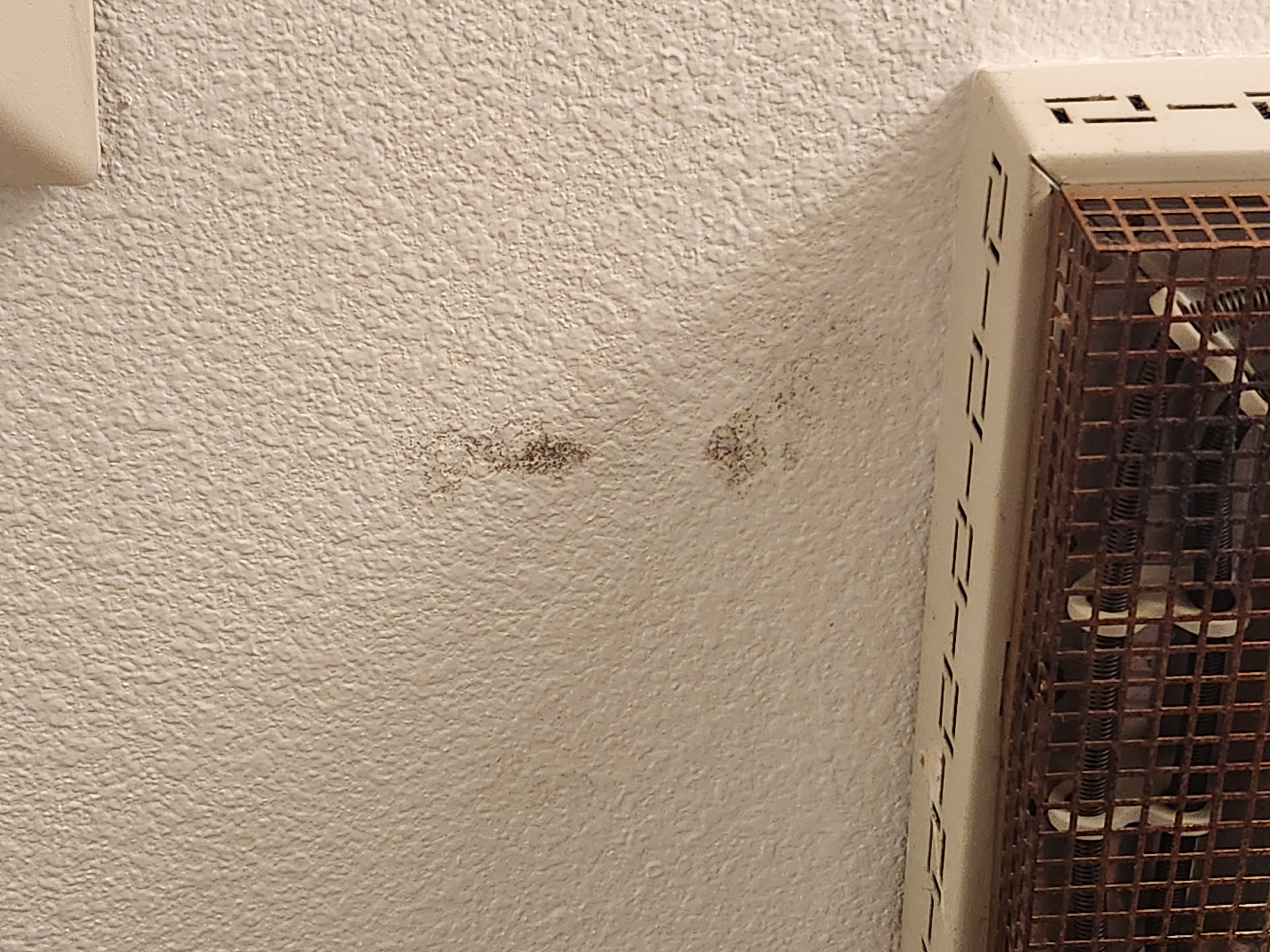I fixed the roof now onto the dry wall. I’ll post in the comments a picture from the house and from the attic of the dry wall in question. Do I need to cut it out and replace it or just paint over it or something else I am unaware of?
I’m just another guy, not a professional at all. I am, however, a microbiologist that works at a place that tests for this exact thing (but we don’t remediate). So this does not constitute a recommendation. Hopefully an actual remediation person can come in and tell you/correct me so I know. I make zero claim to how the spot will look after, but it should be fine. And so on and so forth.
From a microbiology standpoint, if it’s grown like that, its going to have put spores out everywhere. So while cutting it out and replacing is the BEST option, it’s mostly just going to remove the active production of spores. This can also be nearly identically achieved with a bleach solution. You can buy them premade, but it’s basically just 10% (?) bleach and 90% water. Should be super easy to find exact formula online. Put that in a spray bottle, soak the spot on both sides, let it dry, and repeat a couple of times. Maybe scrape it off with a putty knife and put it directly into a sealed bag before you walk it through your house. Seriously, spores are no joke - some can survive re-entering the Earth’s atmosphere. Don’t walk it through the house open. Respray, rinse and repeat.
If you REALLY want to make sure and give zero shits about how it looks, use 100% bleach after. But know that bleach likes to dissolve things - it’s basically the same as an acid, but in the other side of the chemical spectrum, and has the same results. I’d check online to see how drywall will react before doing this, but it’ll kill the fungi/mold.
Once you’re satisfied that the spot has been touched by bleach all the way through, paint it and forget it exists. It’ll let you know relatively quickly if you didn’t get it all.
Again, this is from a microbiology standpoint only. I have no idea how the drywall will react or have any experience in remediation.
Good post for sure. I can chime in from the environmental consulting and remediation side. Honestly, from the pictures that doesn’t look that bad. If it were my house I’d treat with biocide, paint, and be done with it assuming it’s fully dry and the water problem is gone.
Not an official recommendation of course, but I wouldn’t use bleach. Bleach can damage building materials. What’s a better option is something like Shockwave or Concrobium, something that is EPA-registered for use as a biocide. I would apply it on both sides of the drywall to the point of it soaking in, and then allow it to get fully dry. After I was SURE it was dry I’d paint both sides with Kilz primer, and repaint to suit. The Kilz primer will act as an encapsulent and make sure you are not exposed to any of the dead mold.
I’ve done quite a bit of mold removal in my house from before we encapsulated the crawl space, and this has worked flawlessly even though I have family members that are extremely sensitive to molds. I wouldnt worry too much about mold spores present throughout your house- the dirty secret of the remediation industry is that there are mold spores literally everywhere. They key is to make sure the humidity levels in your house are controlled and never exceed 60-65%.
Thanks. My only concern with bleach is that it will dissolve the drywall or any glues that are in it holding things together.
If you use it on the surface, you won’t have any problems (if it’s diluted). It’s something that’s sold for this exact thing. Otherwise, a quick Google would tell you if there are any problems. I’m just trying to help with the mold/fungal part since that might be a little more tricky to understand.
My only hesitation is if it gets under the paper. It still should be fine, but I don’t want to say yes when I’m not 100% sure (it’s a scientist thing).
The pure bleach… Well, I’d test that first on a small piece of drywall if you have any laying around. Put a little on, let it sit for a minute, wipe it off with water a couple times and see how it looks in a day or two. In a different spot, put some on for 5 min and do the same thing.


I had what looks like a very similar situation. If you’re not that concerned about the mold in the attic area, or can’t afford a major rix/remediation you could get some Kilz Upshot. It would cover the water stain and you’d be good to go for painting over it. I didn’t need to paint as the Upshot matched my ceiling paint perfectly. Edit: You should still attempt to clean the mold off as best you can with bleach first, but even after cleaning there will likely still be some staining which you could use the Kilz to cover.

